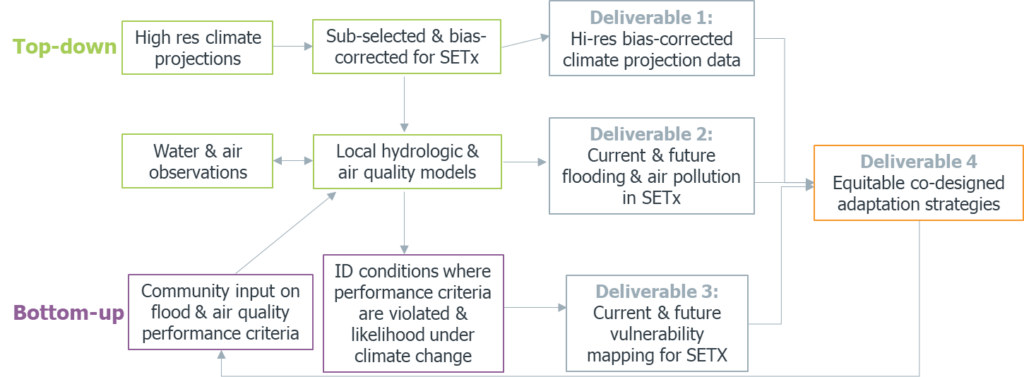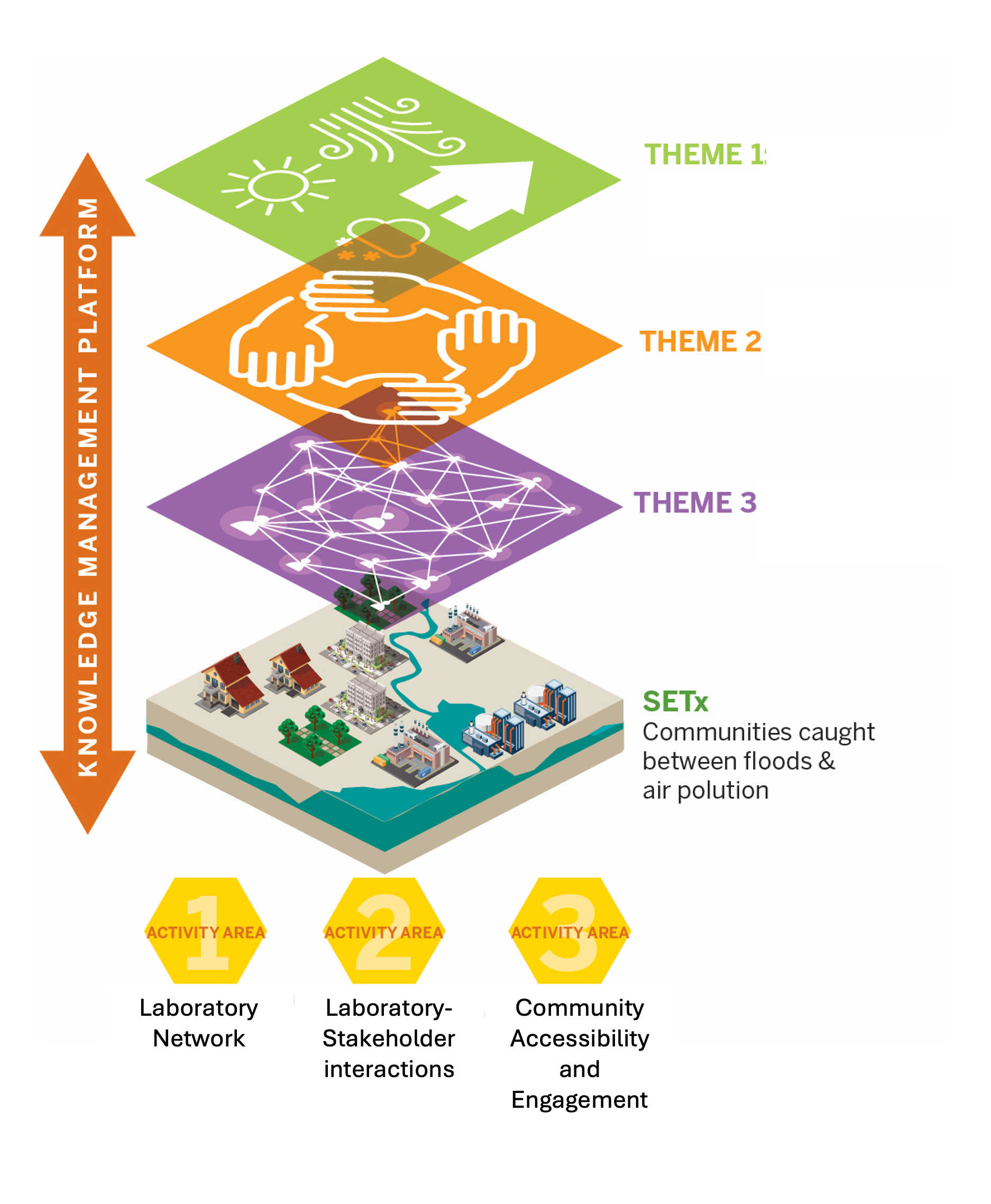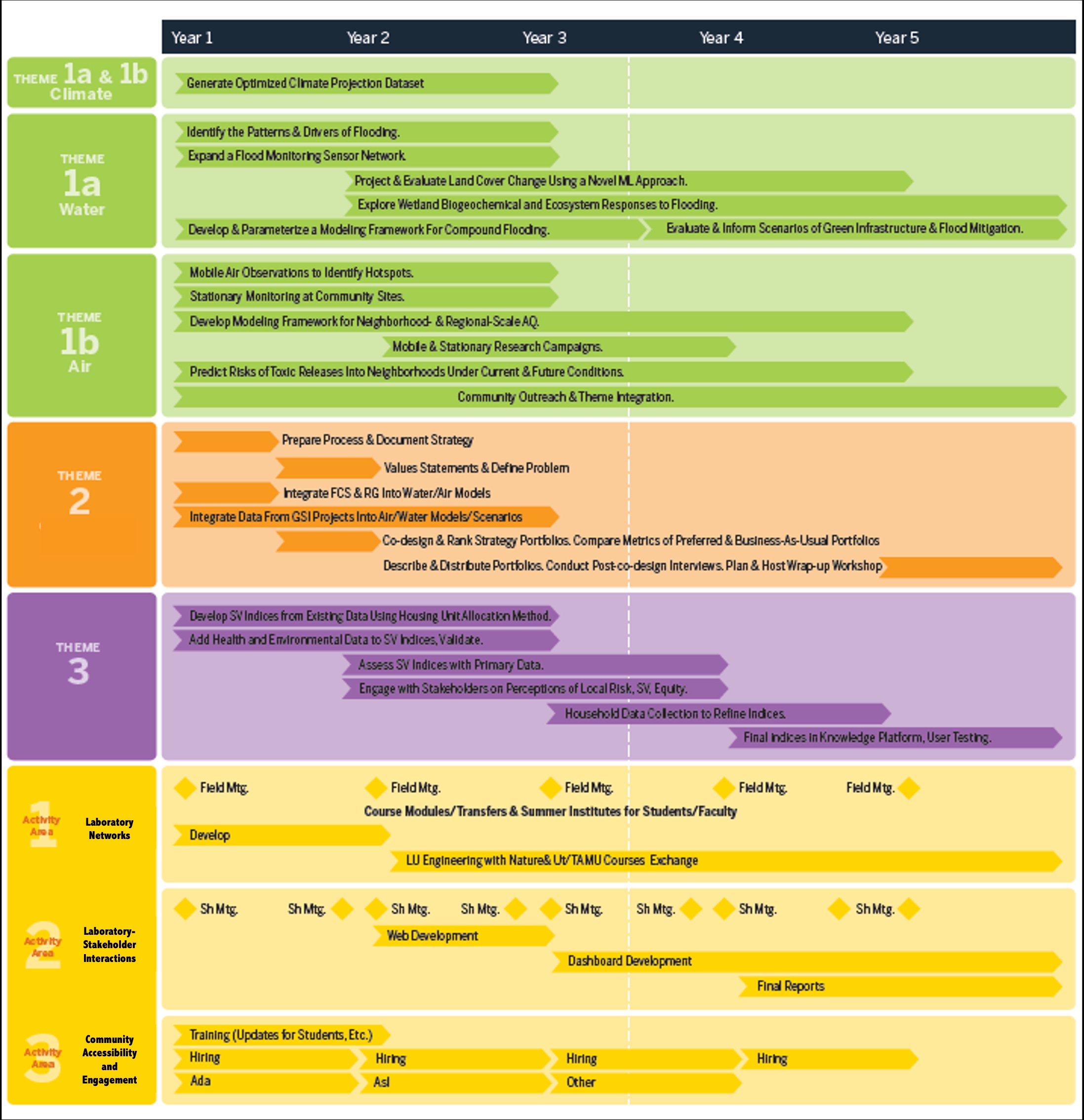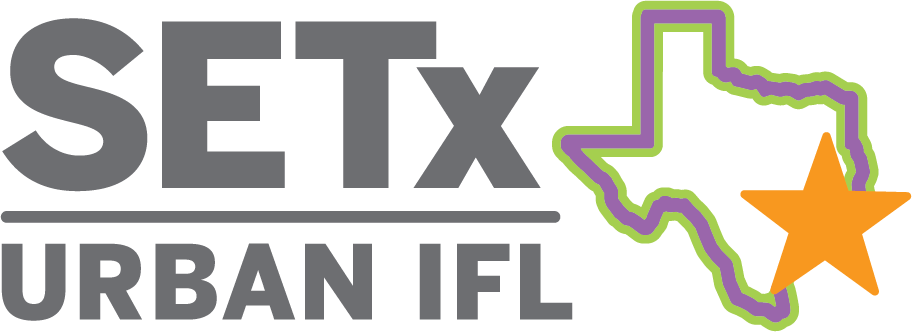Research Approach
SETx-UIFL utilizes an inclusive multiplex approach integrating three interacting themes (Environment, Co-Design, and Equity), supported by a Knowledge Management Platform and three Activity Areas, aiming to foster equitable solutions for communities caught between floods and air pollution.

Research Teams

- Theme 1
- Climate
- Water
- Air
- Theme 2
- Theme 3
- Activity areas
- Knowledge Management Platform
Research Focus Areas (RFAs)
RFA1: Land use & meteorological conditions contributions to hazards

- What characteristics of meteorological conditions contribute most to flooding, air toxicity & their compounding effects & must be represented in high-res climate projection data?
RFA2: Observations, pollutants, & effects of wetland restoration on the ecosystem

- How can an enhanced flood & air pollution sensing network inform the public & decision-makers during acute events & provide data for future mitigation strategies?

- What is the source apportionment of gas-phase pollutants that vulnerable communities are exposed
to indoors and outdoors?

- What is the chemical composition of air & water in zones most vulnerable to hazards & how does it change under current and future meteorological conditions?
RFA3: Co-design & planning processes to support equitable interventions

- What are the planning processes & tools to support the implementation of equitable interventions?
- How can a co-designed process & outputs help communities anticipate & prevent unintended consequences of acute & chronic events?
- How can place-based social vulnerability & climate equity measurements contribute to resilience planning processes such as co-design?

- What co-designed portfolios of traditional infrastructure strategies & nature-based strategies will reduce flooding & mitigate air pollution?

- How can climate adaptation portfolios be co-designed so that marginalized communities experience equitable benefits?
- Do individual problems shift to shared understanding through co-design?
- How are predicted impacts of climate change & proposed strategies distributed across groups?
Timeline

